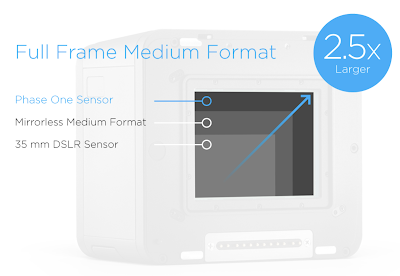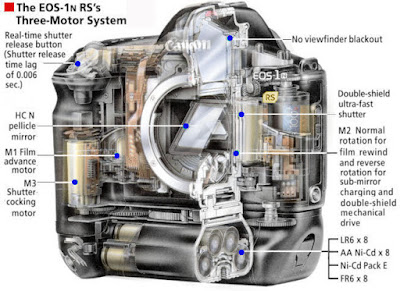The Field vs Studio Camera Difference at Play
When I first started shooting with an interchangeable lens camera, I chose a Canon and considered myself a Canon shooter for a long time. These days I shoot more Fujifilm, both the X and the GFX Systems. I have kept the Canon EF mount system because there are so many lenses you can't get for Fuji mounts. Today, I would discuss how the field vs studio camera difference that we previously discussed comes into play in practice.
Of late I have been shooting a lot of macro work after making friends with Kiki the neighbourhood brushtail possum! They are encountered often in suburbia here in Australia. Here's a little link to the story on Instagram.
Kiki is quite the Fujifilm fangirl. When she sees my camera, she comes rushing down from the treetops to say hello. She is fascinated by the Fujifilm camera and goes right up to it, sniffing it and touching it with her hands.
There were issues I had with shooting this scene. The biggest one comes from the fact that possums are nocturnal creatures. To avoid losing depth of field I needed to stop down to between f/7.1 to f/11, but that meant losing light and pushing up the ISO. If you opened up the aperture to f/5.6, then in a scene like in the middle shot, I found that the focus would either fall on the banana or a part of Kiki (like either the nose or the eyes) but not both at the same time. The next thing is that you are shooting fast-moving wildlife so you needed to shoot at the fastest shutter speed possible, meaning that you would lose even more light. I used a continuous LED macro ring light attached to the end of the macro lens and even then I was shooting at ISO 3200. Shooting with a flash was not practical as the ambient light was too dark for the camera to focus before firing the flash, and with fast-moving action, you need to shoot at between 4-11 fps to capture rapidly unfolding events like Kiki snatching at the banana. Flash would have also scared Kiki off and hurt her eyes. Possums have huge round eyes to maximise nocturnal vision, like large aperture fast lenses for low light photography, so firing flash into her eyes at macro distances would cause her discomfort. In wildlife photography, respect for the animal you are photographing is paramount.
All of these shots were taken with a Fujifilm X system camera and either the XF 80mm f/2.8 or the Zeiss 50mm f/2.8 1:1 macro lens. As you can see by the shot in the middle, that I am holding the camera in one hand while feeding Kiki with the other hand. The fact that these were shot on an APS-C system meant that it was much easier to shoot at the 35mm equivalent of a 75-120mm focal length using only one hand. I could have shot with a 35mm format macro lens but APS-C was just less cumbersome in the field working with two cameras and two lenses.
At the same time, I have been wondering about getting the Fujifilm GF 120mm f/4 1:2 macro lens. As you often stop down to shoot macro to avoid the depth of field becoming too shallow, you don't need the f/2.8 maximum aperture. The trouble is that the larger the sensor/film format, the shallow the depth of field becomes at any given field of view. That means that in the above scene with Kiki, you would have to stop down more, forcing you to push your ISO stop up even higher. Given that the GF 120mm is only a 1:2 macro, it probably wouldn't have even got Kiki in focus as she suddenly came in close to me to snatch the banana out of my hand. Don't even think about macro extension tubes because these drastically reduce the speed and accuracy of autofocus. Extension tubes cause autofocus to stop working at non-macro distances meaning that it would have been impossible to shoot Kiki as she came down from high up in the tree, coming closer and closer until she grabbed the banana from my fingers. Focus stacking wouldn't help either as you can only do that with a still subject. You can't focus stack if you are shooting a fast-moving animal and even flowers move in the wind. One further advantage with small format cameras is it wins you more depth of field. Not only that but as you increase the format size the lens gets much larger. The increased weight would make shooting with one hand while feeding Kiki with the other hand much harder. And even if the absolute focal length of the GF 120mm is greater it has a lot less reach than the XF 80mm f/2.8 lens.
That raises the question as to where you would use a medium format macro lens. It struck me that the best place would be in the studio, on a tripod, doing product photography. Sure you can use it out in the field too as long as it was the main camera being used and not, as often with wildlife photography, using it as a supplementary camera to your main camera with a heavy telephoto lens attached. Having an APS-C camera with a macro lens out in the field shooting wildlife is really useful. It isn't too big or heavy and even an 80mm lens has a lot of reach. I realised that's how I use my macro lens, meaning that I don't get much use out of my 35mm subframe macro lenses, and would probably get even less use out of a 4433 medium format macro lens like the GF 120mm f/4. An APS-C small format system can also shoot faster, easily reaching 8 fps, in a way that medium format can't do. Sure there are 35mm subframe cameras that can shoot fast, but it's a rather more expensive and less compact way of doing things for a supplementary camera to the one with a long telephoto lens you already have on you.






Comments
Post a Comment